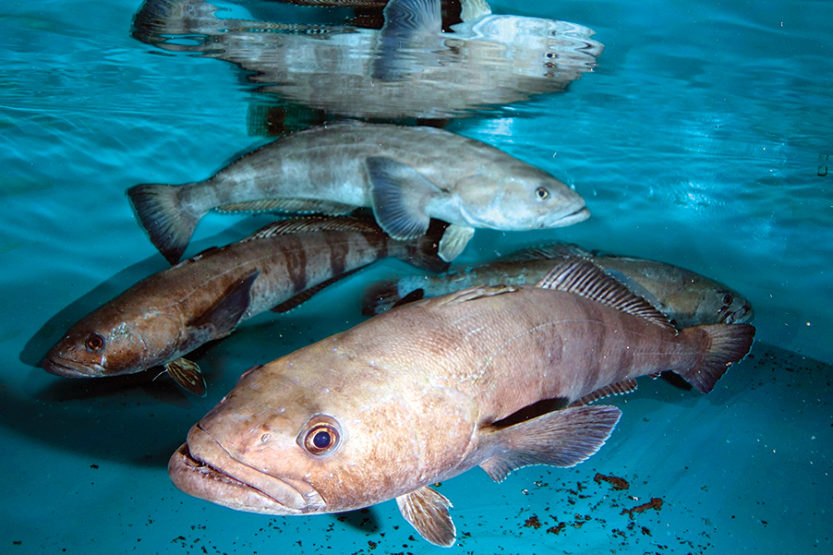Ingenious: Beneath icy waters
 UI researchers discovered that the Antarctic toothfish produces its own “antifreeze” to survive in water temperatures of -2 degrees Centigrade. (Image by Elliot DeVries)
UI researchers discovered that the Antarctic toothfish produces its own “antifreeze” to survive in water temperatures of -2 degrees Centigrade. (Image by Elliot DeVries) The Antarctic toothfish, which can weigh more than 200 pounds and grow as long as 5 feet, moves easily through the crystal-clear water beneath the thick ice.
The toothfish, like other fish in these frigid waters, carries a gene that triggers the creation of an “antifreeze” glycoprotein, which allows it to survive in waters that are typically -2 degrees Centigrade (28.4 F).
From Montana to Antarctica
Arthur Devries stumbled across antifreeze glycoproteins in 1964 while working on his thesis at Stanford University. For 35 years as a UI professor of animal biology, he continued to pursue this unique adaptation.
Growing up in Montana, Devries is used to the cold. And it helps that when he makes these regular trips to the Antarctic, he is joined by his wife, Christina Cheng, also a UI professor of animal biology.
The two met in 1976. Cheng worked at one end of the basement in Burrill Hall, while Devries worked at the opposite end, “and we met in the middle,” she says. Cheng took her first trip to the Antarctic with Devries in 1984, and they married in 1986.
Rare evolutionary occurrence
Devries and Cheng discovered that these fish ingest ice crystals. But what keeps them from becoming solid ice are their antifreeze glycoproteins, which bind to the crystals and prevent them from growing inside the fish.
“So these [fish] are destined to carry ice crystals in their bodies all their lives,” Cheng says.
In 1990, Devries and Cheng sequenced the genome of these fish, called notothenioids. They found that the critical gene evolved by taking a snippet from a pre-existing digestive enzyme gene.
Devries retired in 2011, but he and Cheng still travel to the Antarctic for their research.

